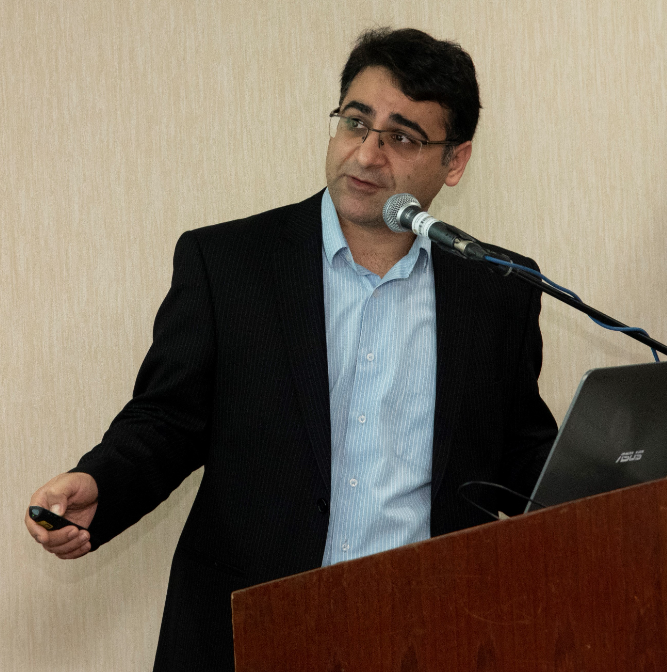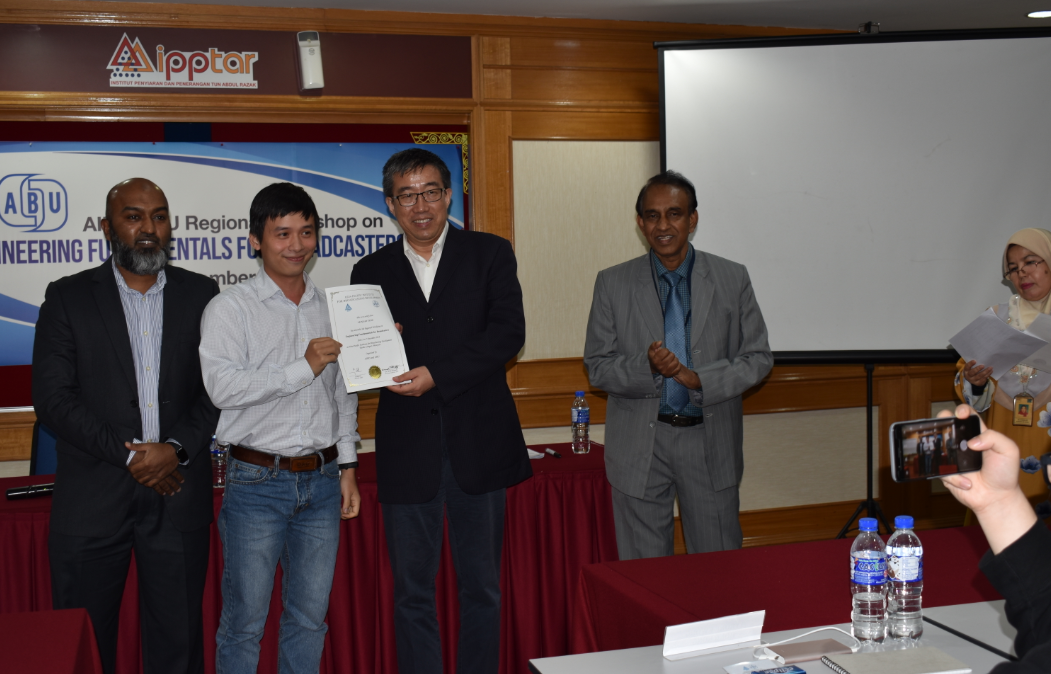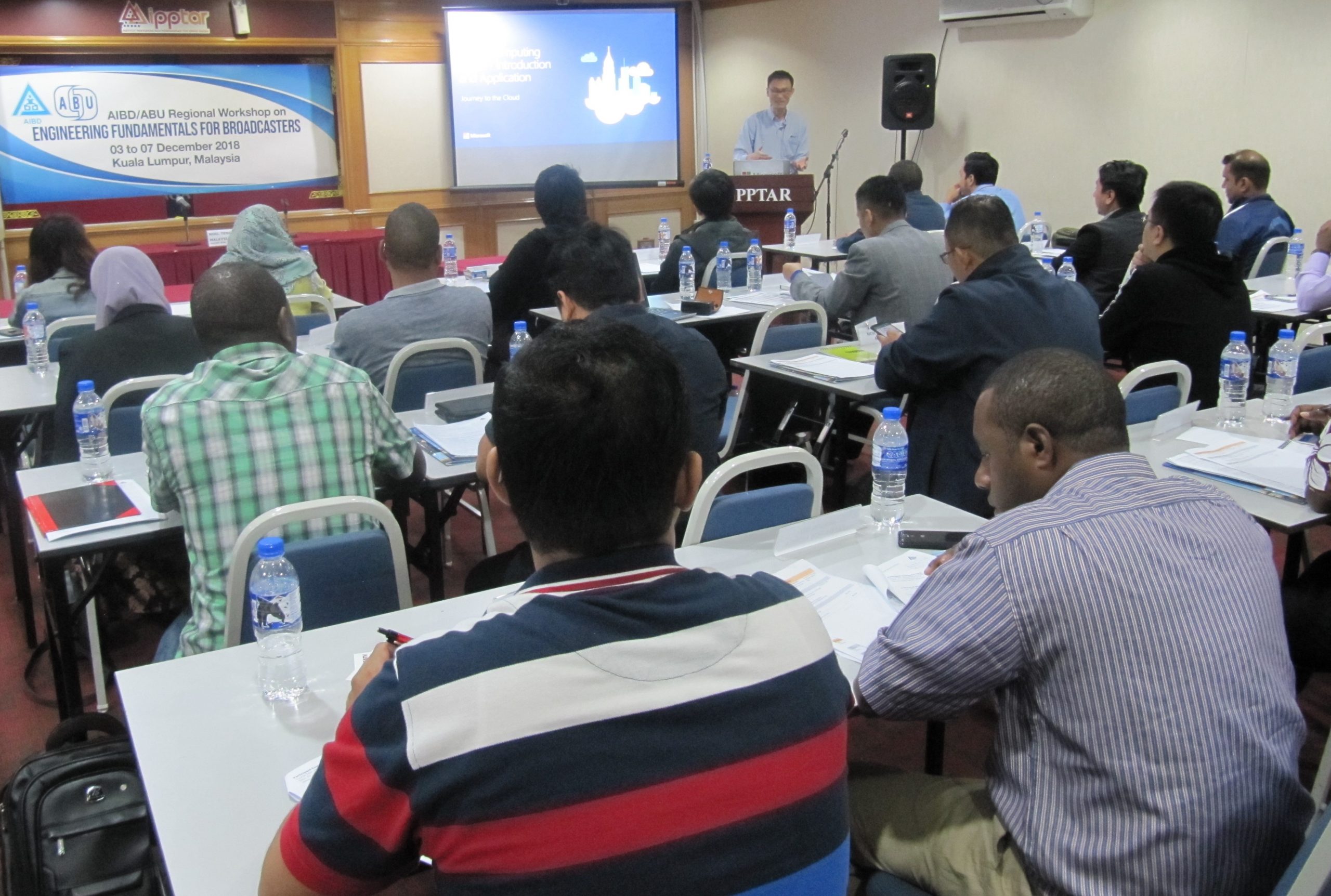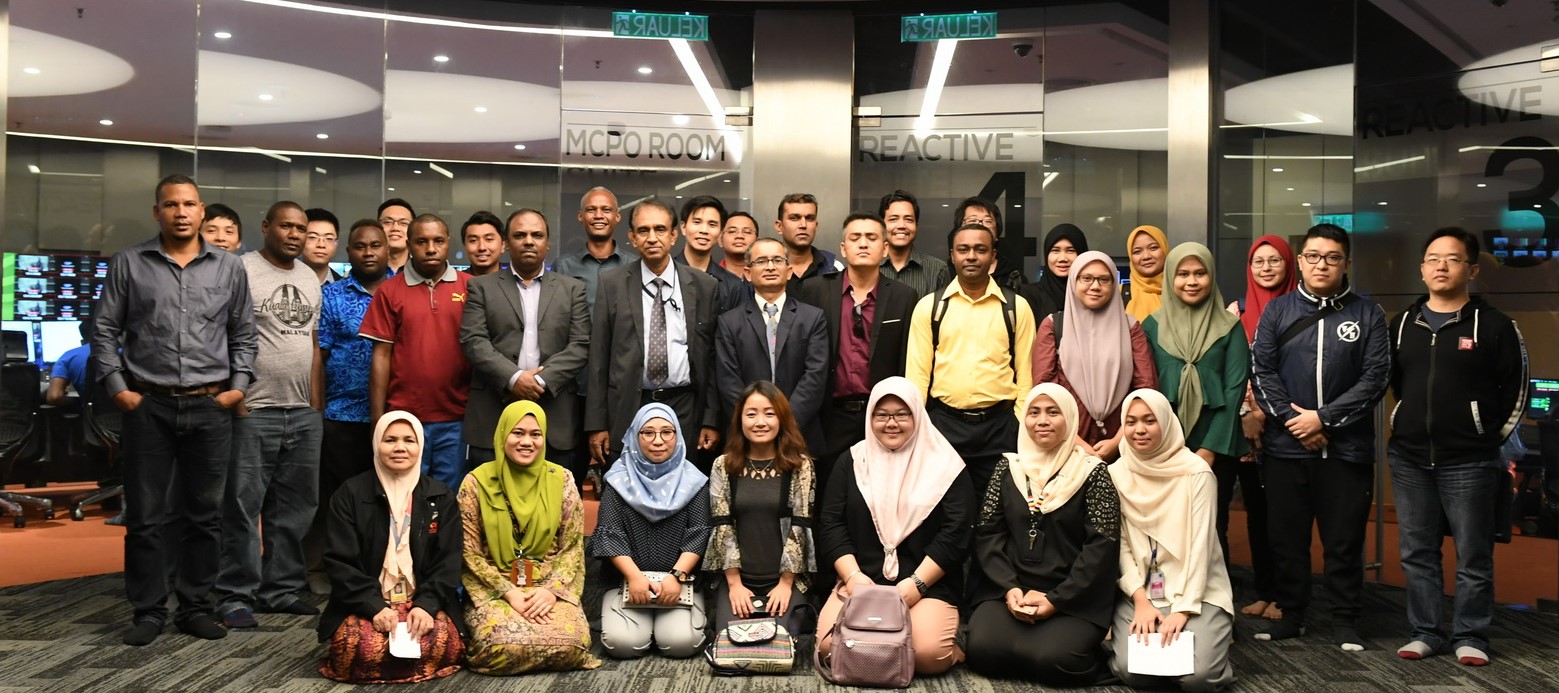
Asia-Pacific Institute for Broadcasting Development (AIBD) in collaboration with the Asia-Pacific Broadcasting Union (ABU) organised a 5-day regional workshop on Engineering Fundamentals for Broadcasters in Kuala Lumpur, Malaysia from 03 to 07 December 2018.
The workshop was specifically designed for broadcast engineers and technologists who are at the beginning of their careers and working in the broadcasting organisations. 34 participants from fourteen AIBD and ABU member countries attended the workshop.
The five-day workshop brought forward different topics that included Basics on Sound and Picture, Concepts of Analogue to Digital Conversion, Evolution of Audio and Video and Broadcast On-Air Chain, Audio Video Integration, Digital Video Fundamentals, Filed Based Media, Principles of media compression, technologies and standards, MPEG Video Schemes and standards, Spectrum for Media Delivery and Management, Evolving Media and Delivery platforms, Radio Studio and System Design for the future, IBB (HbbTV) service setup and provision for DTV, Azure Inspired Software Defined with windows server and Hyper-V, Used of IP in Media Production, Converged media-IT-Broadcast landscape, Audio capture and processing for immersive audio, Audio processing for future broadcasting and Media, Big data and Cyber security.

The workshop’s resource persons, who were experts in their subjects, were Dr Mohieddin Moradi of IRIB Iran, Mr Ahmed Nadeem and Mr Shree Bhadra Wagle from ABU, Mr Utpal Kanti Mandal from AIBD, Mr. Bala Murali Subramaney, Chief Technology Officer, Astro Radio, Mr Matte Ashe from Benchmark System, Mr Noel Teng, Technology Specialist Microsoft and Mr Geoffrey Low from Dolby.
The workshop started with the brief introduction of the workshop and overview of the topics by Mr Utpal Kanti Mandal and Mr Ahmed Nadeem. Dr Mohieddin Moradi three sessions in succession and discussed about the basics of sound and picture,understanding video capture, and processing and detailed about the audio processing, monitoring and measurement. He also took several other sessions in subsequent days wherein he provided in depth knowledge in various topics like principles of media compression technologies and standards, evolving media and delivery platforms, converged media-IT broadcast landscape and others. He provided latest developments and advancements in media technology in great detail to the extent of evolving technologies like Artificial intelligence (AI), Machine Learning (ML), Augmented Reality (AR) and Virtual Reality(VR). The participants were largely benefitted with vast knowledge base and effective teaching technique of Dr Moradi. Mr Shree Bhadra Wagle of ABU in his session talked about Broadcast Path: from Microphone and Camera via Console to the Screen and Speakers; Systems for Recording, Modulation, Transmission and Reception chain.

Mr Ahmed Nadeem Director Technology ABU took a number of sessions and provided details on evolution of audio and video, brief history of radio and television, audio and video distribution system and fundamental of analogue and digital signals. He utilised quite a number of audio visual clips for clear understanding on the subjects like audio basics, camera, microphones etc. on which participants showed special interest. He discussed about repurposing of content, file formats and codecs, IP protocol and streaming methods. He also took a lecture session on Big data and Cybersecurity providing components and applications of Big data and opportunities and challenges for media due to increasing threat of Cybercrimes
Mr. Utpal Kanti Mandal of AIBD took lecture session on Spectrum management and network planning for broadcasting services. He provided the basics of spectrum management and frequency allocation for various services based on the ITU allocation. He explained to the participants about the structural details of International Telecommunication Union (ITU) and also about the National Spectrum Management Authority. He explained about network planning for Television broadcasting and touched upon radio wave propagation phenomenon in different layers of ionosphere. He also discussed about the complex process of World Radiocommunication Conference (WRC) of ITU.
Mr Matt Ashe, Principal Engineer at Benchmark Broadcast Systems in his session briefed about Analogue Transmission Systems, MPEG Standards Overview, MPEG-2 Transport Stream Structure, Digital Terrestrial Transmission Standards, Digital Modulation Schemes and Digital Terrestrial Transmission Systems. He provided detailed information about all the analogue and digital TV standards, basic structures of different systems and specifications. He also provided the details of Chinese standard DTMB while comparing with other standards like DVB-T/T2, ATSC etc.
Mr. Bala Murali Subramaney of Astro Radio talked on Radio Studio and System Design for the future. He explained details on various elements of radio studio and systematic approach needed for designing the studio. He elaborated on radio studio console, radio studio automation system, central router, social media workflow and others. He also briefed about the radio studio construction including typical electricity requirement. The participants who are working in Radio could take valuable information about studio system by seeking clarifications during the lecture session.

Mr Noeng Teng,Technology Specialist Microsoft in his lecture session discussed about the Azure Inspired Software Defined with windows server and Hyper-V. Azure and Windows Server have been sharing deep capabilities for a number of years now. In the latest Windows Server 2016 and more recently, Windows Server 1709 even more Azure inspired Software Defined capabilities have been downloaded from Azure. Mr Noel shared the latest and greatest capabilities of Azure with demos and videos. His session was highly interactive and participants were very keen to know more about the cloud service and raised unprecedented number of questions to clear their doubts.
Mr Geoffrey Low of Dolby Laboratories in his session discussed Dolby Atmos: The next generation 3D audio experience. He explained general aspects of 3D productions, setting up microphones for 3D, producing sports broadcasts in 3D, producing live music recordings in 3D, mixing immersive sound formats, content creation tools for immersive audio, up mixing from Stereo to 3D, monitoring immersive sound formats and also Dolby Atmos content creation process.
Participants also visited the radio and television studios of Radio Television Malaysia (RTM) including their HD studio, Master Control Room, Satellite Earth Station set up. The Engineers of RTM in respective areas gave briefing about their systems. The participants were very enthusiastic and were able to gather substantial knowledge and information from the technical facilities of RTM.

This was the fifth regional workshop designed specially to enhance capacity of newly employed engineers / technologists working in the broadcasting organisations. The 6th Regional workshop in this series will be held at Kuala Lumpur, Malaysia during 02 to 06 December 2019.
Regional Workshop on Engineering Fundamentals for Broadcasters
Asia-Pacific Institute for Broadcasting Development (AIBD) in collaboration with the
AIBD/HBF Regional Workshop on New Approaches to Gender Issues through Broadcasting
The AIBD/Hoso Bunka Foundation (HBF) Regional Workshop on New Approaches
AIBD/CGTNC Regional Workshop on Convergent Journalism
17 participants from 13 countries across the Asia Pacific region
75% of cars to have Digital Radio Service by 2020? By Anthony John Frangi
Radio has given me great pleasure over the years –
AIBD-LNR In-Country Workshop on Mobile Journalism
AIBD and Lao National Radio organised an In-Country workshop on
AIBD/RTB/DARE In-Country Workshop on Creative Content Development
A four days In-Country workshop on Creative Content Development (CCD),
AIBD/ IPPTAR/ MDEC Regional Workshop on Data Journalism
On 3rd October 2018, thirty-one Asia Pacific journalists gathered at
WORKSHOP ON CREATIVE CONTENT DEVELOPMENT –the HOW factor
RTB/AIBD/DARe In-Country workshop on Creative Content Development (CCD), which focuses
AIBD/MBC In-Country Workshop on Emerging Technologies for Broadcasting and Media; Production to Delivery
Mauritius Broadcasting Corporation - MBC is the public broadcaster in
AIBD/ABU/DRM Regional workshop on Digital Radio Mondiale (DRM)
The Digital Radio Mondiale (DRM) is a digital radio standard




